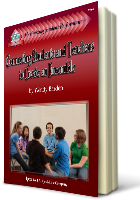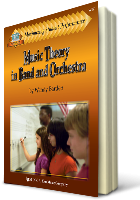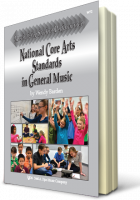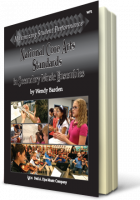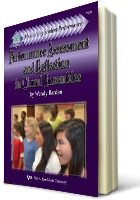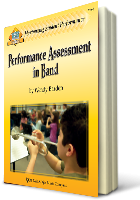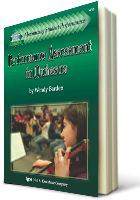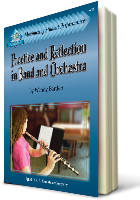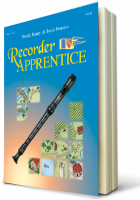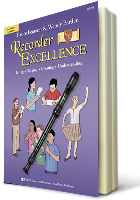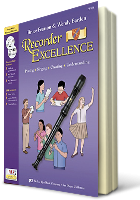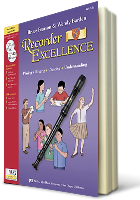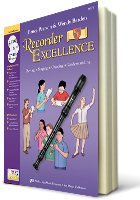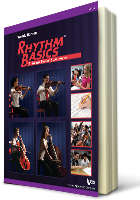Concerts done? Finish the year with musical fun!
Between the spring concert and last day of school there may be time in your rehearsals for a bit of musical fun. Here are three activities that are among my students’ favorites!
TERMS TRIVIA. Turn the review for your final summative assessment into a team game. To get started:
- Divide your ensemble into small groups of 3-5 members. Consider grouping students by mixed abilities and interests so every group has the possibility of answering every question. You might even have each group choose a group name.
- Make a list of 5-6 categories such as Dynamics, Tempos, Musical Styles, Articulation, Rhythm, and/or Miscellaneous. Broaden the game with other categories such as Composers, or add a Wildcard category of your own.
- Give each group 10-12 notecards on which they will write a category at the top of the card, a question, and the answer. Groups should write two questions per category. Collect the cards.
- After class, sort the cards into categories, remove duplicate questions, and put the remaining questions in the order you will ask them. Create an answer sheet with numbered blank lines and duplicate one answer sheet per group.
The next day:
- Students return to their groups. Space groups around the room so they will be able to softly discuss answers without others eavesdropping.
- Ask the questions one at a time. Students will quietly discuss the answers within their groups and take turns being the recorder to write them down.
- When you’ve asked all of the questions, go over the answers together and have groups correct their own paper. Can you think of small prizes to award?
- Collect the papers so you can see if—or where—more clarification is needed before the final summative assessment.
FOUND SOUNDS QUARTETS. Bring together rhythmic independence and understanding of form in this composition activity. Plan to complete found sounds quartets over more than one class period.
- Create a few 4-part rhythm ensembles (only 2- or 4-measures in length) that are made up of rhythms studied throughout the year. Duplicate a copy for each student.
- Divide students into groups of 4-8 members, or have students form their own. Most students should be successful performing one on a part.
- Each group will choose one of the rhythm ensembles, work together to ensure everyone is able to count and clap their part accurately, and rehearse the parts together. They need to choose a different “found sound” for each part such as tapping pencils, rattling a container of mints, or jingling a set of keys.
- Next, groups create a composition around the given rhythm ensemble using their knowledge of form. Might they add an introduction and coda? How about an ABA piece with an improvised B section? What would it sound like to stagger the entrances of their parts as the B section? Encourage creativity!
- Groups should also make intentional decisions about dynamics and tempo, and give their piece a title that tells the audience something about the sounds they will hear. Allow adequate time for students to create and practice their compositions.
- Have a short recital to share the compositions, and enjoy the fun!
PERFORM THAT TUNE! Apply music literacy skills to read and perform a familiar song. This activity is usually accomplished in one class period.
- Before class, write out a few familiar melodies in 4-measure phrases. Suggested melodies might include "Jingle Bells," "Ode to Joy" theme, and "Frere Jacques." Duplicate and cut apart the phrases, mix them up, and have them ready to distribute one to each student.
- When students have received the strip of paper with their phrase, have them organize into groups by finding others who have the phrases that complete their familiar melody. (This will be easier if you've written the melodies in different keys.) You may have multiple groups with the same melody.
- Once in their groups, students work together to create a performance of their melody. If this is choir ensemble, maybe a place to start is by singing the melody using solfege. Again, encourage creativity!
- Enjoy a short performance of all the melodies.
Yes, and… These activities are more than just something fun to do at the end of the school year! Musically, students are reviewing vocabulary, rhythms, notes and key signatures, form, expressive elements, and musical context. Successful completion of the activities also requires 21st century skills including creativity, problem solving, collaboration, productivity, and accountability. Finally, don’t overlook the personal connections students are making with their peers—connections that are critical to creating and sharing musical performances at the highest level, both tomorrow and next fall.
Thanks for pausing with me for a few minutes in your busy week. Have a good one!
____________________
Barden, Wendy. Connecting Students and Teachers to Create an Ensemble. San Diego: Kjos Music Press (2011).
Partnership for 21st Century Learning. http://www.p21.org/our-work/resources/for-educators (accessed April 14, 2015).



